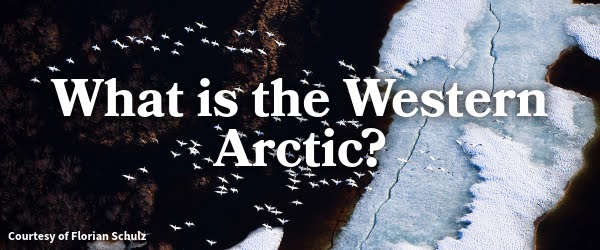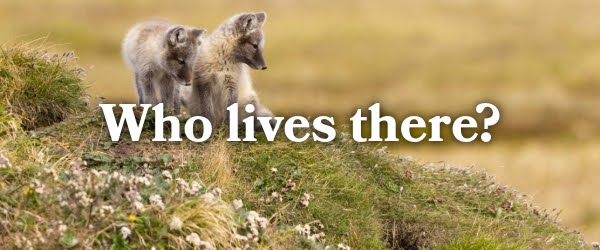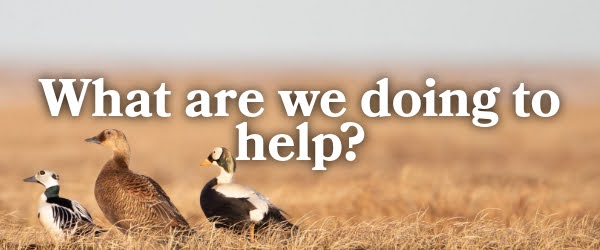

John,
For most, the Arctic conjures images of barren icefields and frost-sharpened wastelands. But tucked into the northwest-most corner of Alaska is a land where herds of caribou thousands strong traverse sweeping valleys, where belugas play in shallow bays and wildflowers bloom beneath a midnight sun.
Welcome to the Western Arctic.

The Western Arctic encompasses 23 million acres spanning from the Northwest slopes of Alaska's Brooks Range all the way to the Arctic Coast. It's the largest contiguous block of public land in the nation, and is managed by the Bureau of Land Management.1
Sporting lakes, rivers, meadows and bays, this landscape supports a wide array of wildlife and has been relied upon by more than 40 Indigenous communities since time immemorial.2 It also sits on vast oil reserves and has been under threat from oil drilling for more than 100 years.3

The Western Arctic is an ecological haven. Two herds of caribou -- the Western Arctic herd and the Teshekpuk Lake herd -- rely on the region during migration, and it's one of the few places frequented by both grizzlies and polar bears.
The region's coast is critical habitat for sea otters, multiple species of seals and whales -- including the endangered North Pacific Right whale and the bowhead whale.4
Millions of birds also migrate to the Western Arctic's lakes and rivers annually to nest, earning it the moniker "Heathrow at the top of the world."5

Last year, after our national network mobilized more than 34,000 Arctic defenders, the Interior Department formally protected more than half the Western Arctic from drilling. These ecologically critical "special areas" cover approximately 13 million acres.6
But the Interior Department recently announced plans to remove these protections, which could open these ecosystems to oil drilling. The infrastructure required for drilling operations can disrupt migration routes and fragment critical habitat while disrupting wildlife with local noise and air pollution. Increased oil drilling also inevitably contributes to climate change, which is already transforming the region.7

The Interior Department is currently accepting comments on the proposed lifting of protections in the Western Arctic and we need to make our voices heard. This summer, we're mobilizing scientists, hunters, outdoor sportspeople and wildlife lovers across the country to come together in support of this spectacular place.
Whether you're a bowhead whale who calls the waters off the Western Arctic home year-round, a snow goose who visits each summer to breed, or a person who never plans to make the journey to this remote wonderland, the fate of the Western Arctic should matter to us all. Let's keep it protected.
Thank you,
Ellen Montgomery
P.S. Want to help defend the Western Arctic and other wild places under threat? Donate today.
1. "Arctic District Office," Bureau of Land Management, last accessed June 25, 2025.
2. "Biden-Harris Administration takes critical action to protect Alaska Native subsistence, lands and wildlife," Bureau of Land Management, April 19, 2024.
3. Ellen Montgomery, "Arctic 'special areas' deserve protection from drilling," Environment America, June 2, 2025.
4. Ellen Montgomery and Catherine Lockett, "Arctic animals, landscapes and people threatened by oil drilling," Environment America, August 3, 2023.
5. Christopher Solomon, "Alaska's last vast wild place is open for drilling. Will the birds survive?" National Geographic, September 10, 2019.
6. Ellen Montgomery, "Arctic 'special areas' deserve protection from drilling," Environment America, June 2, 2025.
7. Ellen Montgomery, "Arctic 'special areas' deserve protection from drilling," Environment America, June 2, 2025.
Your donation will be used to support all of our campaigns to protect the environment, from saving the bees and protecting public lands, to standing up for clean water and fighting climate change. None of our work would be possible without supporters like you. Environment Colorado may transfer up to $50 per dues-paying member per year into the Environment Colorado Small Donor Committee.
Environment Colorado, Inc.
1543 Wazee St., Suite 400, Denver, CO 80202, (303) 573-3871
Member questions or requests call 1-800-401-6511.
Facebook | Twitter

If you want us to stop sending you email then follow this link -- Unsubscribe.